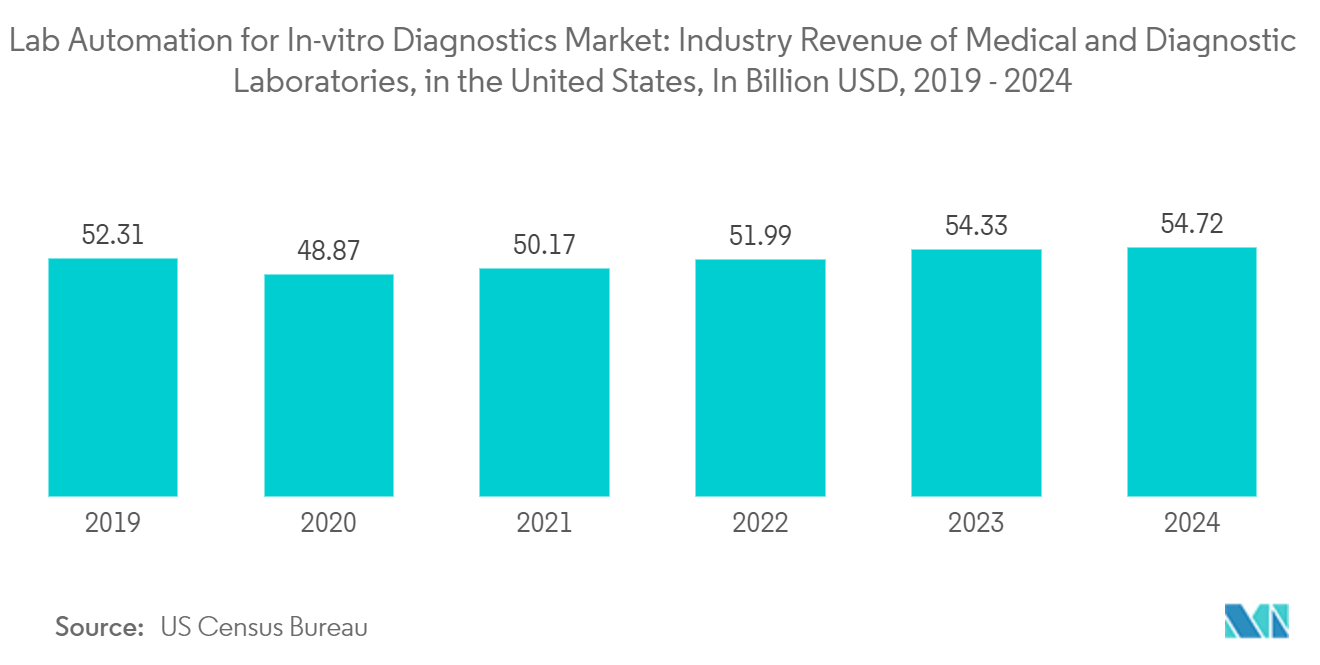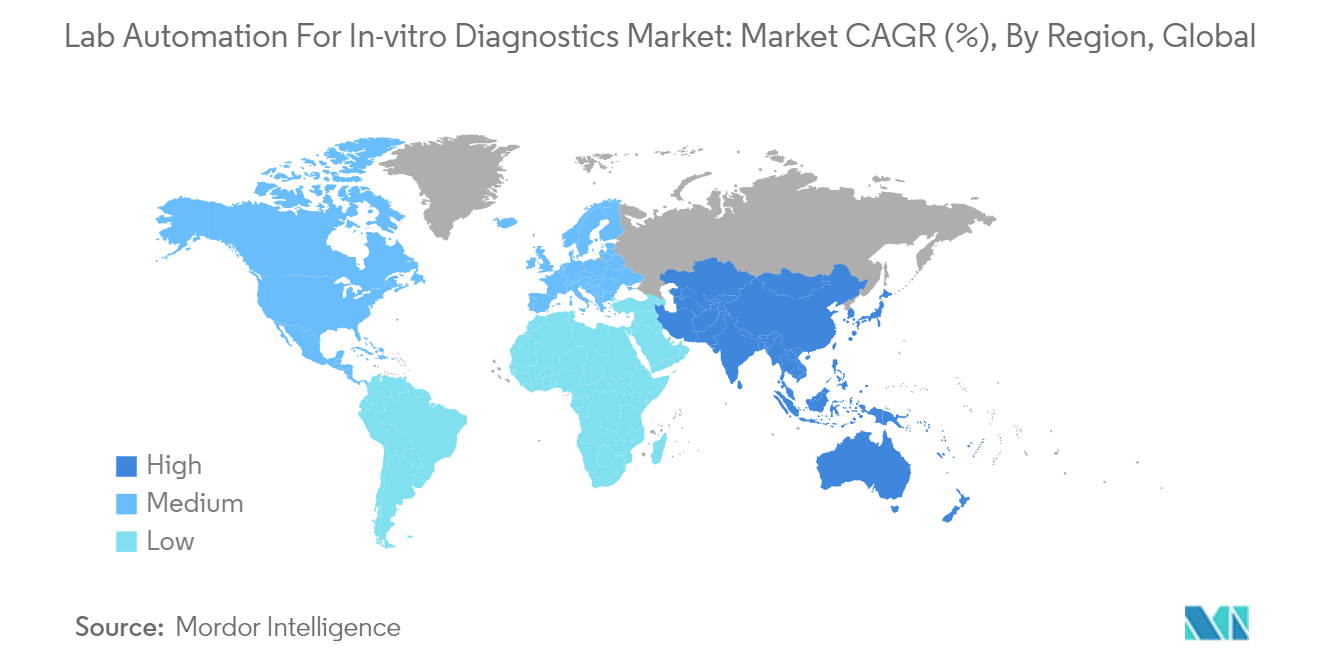Market Trends of Lab Automation For In-Vitro Diagnostics Industry
The Laboratory Segment Holds the Largest Share
- The laboratory segment holds a significant market share by providing critical information to diagnose diseases and guide therapeutic decisions. The scope of robotic surgery, the transition from open to laparoscopic surgery, and the demand for surgeons with expertise in complex robotic medical procedures are expected to expand.
- Clinical diagnostics and in vitro diagnostics (IVD) benefit from advancements in automation and robotics, such as enhanced liquid handling robot solutions rather than individual pipetting chores or other types of manual handling. Robotic ultrasound has been tested in various settings, including operating rooms, remote clinics, and space. According to the US Census Bureau, the industry revenue of medical and diagnostic laboratories is expected to reach USD 54.72 billion in 2024, compared to USD 54.33 billion in 2023.
- Robotic arms are increasingly used in research laboratories for applications requiring flexibility, efficient space utilization, and seamless integration of lab peripherals. Adoption has grown over time due to the ease with which the arms can be programmed. As a result, the market will be driven by the increased adoption of robotic arms for lab automation.
- The most common application of robotics in laboratories is machine tending or pick and place to reduce labor requirements and increase productivity. For instance, in March 2024, Abbott launched its advanced automation solution, GLP Systems Track, developed to cater to the high-volume demands of laboratories in India. This launch signified Abbott's commitment to enhancing care quality while optimizing resource utilization. Tailored to various care environments and adjustable to different laboratory sizes and patient volumes, GLP Systems Track facilitates processing many test tubes daily. Notably, this automation solution is projected to slash operational costs by over 50% compared to traditional systems, ensuring enhanced system uptime.
- Due to technological advancements and increased demand for results, laboratories utilize automated systems. Owing to its precision, improved data management capabilities, reduced repetitiveness, and eventually less human intervention, lab automation is becoming more popular, resulting in higher throughput and accuracy. For example, a robot arm for sorting blood samples decreases hospital diagnostic center personnel's workload while providing safety.
- Moreover, IoT-enabled systems provide server control and monitoring of various sensors and can be easily configured to handle additional hardware interface modules. Sensors installed in robots and loaded onto devices may aid data collection and communication with cloud servers and other devices. Furthermore, laboratories can maintain data with high levels of security while providing accurate and unaltered data via IoT.

North America is Expected to Hold a Significant Market Share
- North America dominates the market due to the presence of large pharmaceutical companies and the rapid increase in investment in the drug discovery and genomics industries. The United States is expected to record a significant growth rate during the forecast period due to the increased development of novel technologies, rapid population growth, and continuous technological advancements.
- North America has been a leader in clinical research for many years. Pfizer, Novartis, GlaxoSmithKline, J&J, and Novartis are among the major pharmaceutical companies headquartered in this region. In addition, the area has the greatest concentration of contract research organizations (CROs). Some significant CROs include Laboratory Corp. of America Holdings, IQVIA, Syneos Health, and Parexel International Corp.
- Due to the availability of government funds, stringent FDA regulations, and the growing use of molecular diagnostics in genetic disorders and cancer screening, the market in North America is expected to witness growth. For instance, in FY 2024, the President's Budget under the Department of Health and Human Services (HHS) committed to enhancing the health and well-being of Americans. The proposed budget allotted USD 144.3 billion for discretionary spending and USD 1.7 trillion for mandatory expenditures. The budget is aimed at securing a healthier, more dynamic future for all Americans by investing in extended coverage and access to care.
- The growing number of surgeries and the prevalence of various chronic diseases drive demand for automation in the clinical diagnostics industry. The American Orthopedic Surgeons (AAOS) predicts that approximately 3.0 million total knee arthroplasty surgeries will be performed in the United States by 2030. Diagnosing these and other chronic conditions necessitates sample collection, which increases market demand.
- Increased access to superior technologies, increased demand for laboratory automation, and the expansion of molecular diagnostics for genetic disorders and cancer screening in the United States may all boost market demand in North America. SmartLabs, a Boston-based laboratory-as-a-service (LaaS) leader, announced plans to open SmartLabs' advanced resourcing in Boston and the Bay Area, which is expected to become the city's most prominent life sciences research and production space upon completion in 2025.


